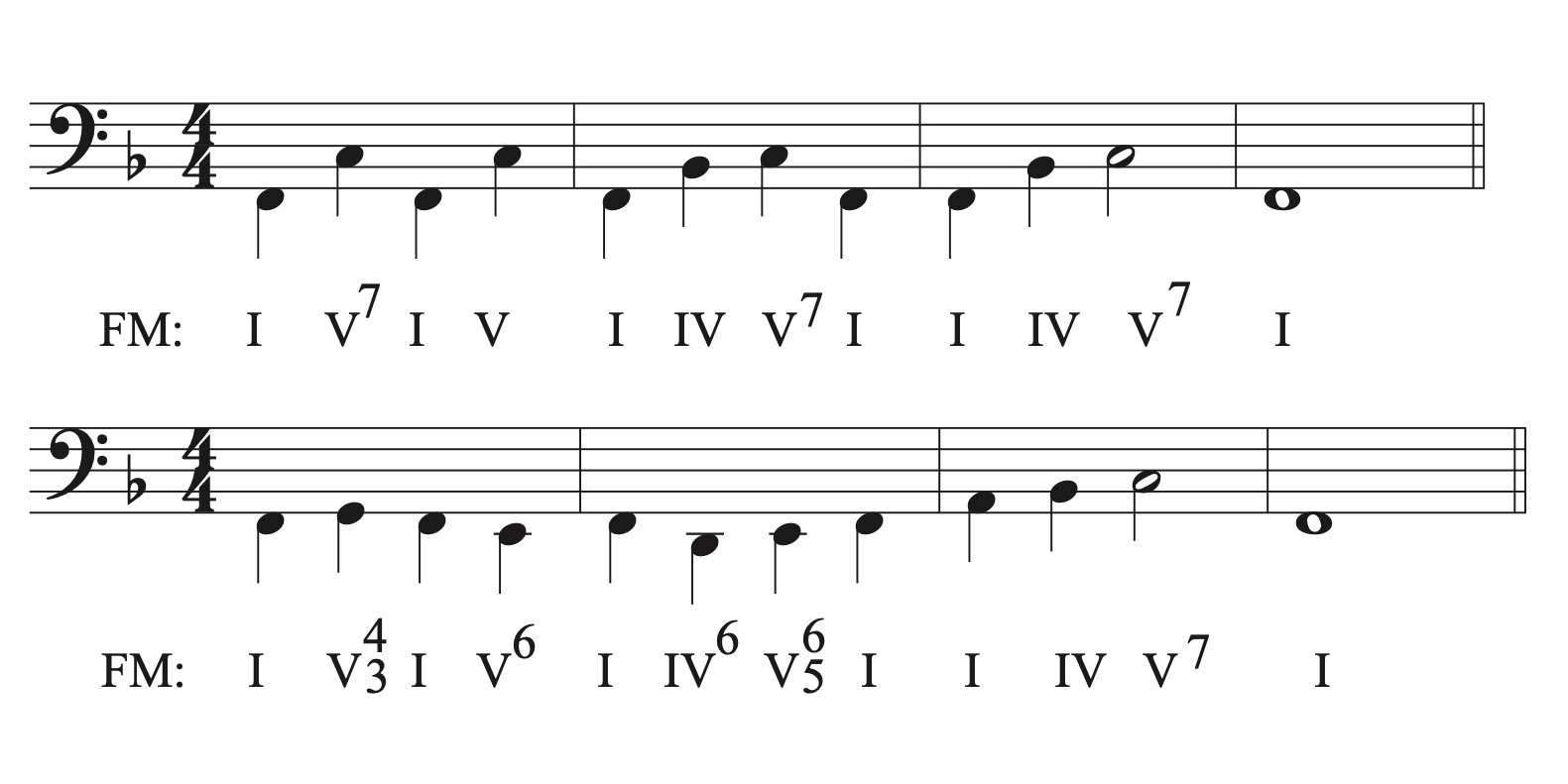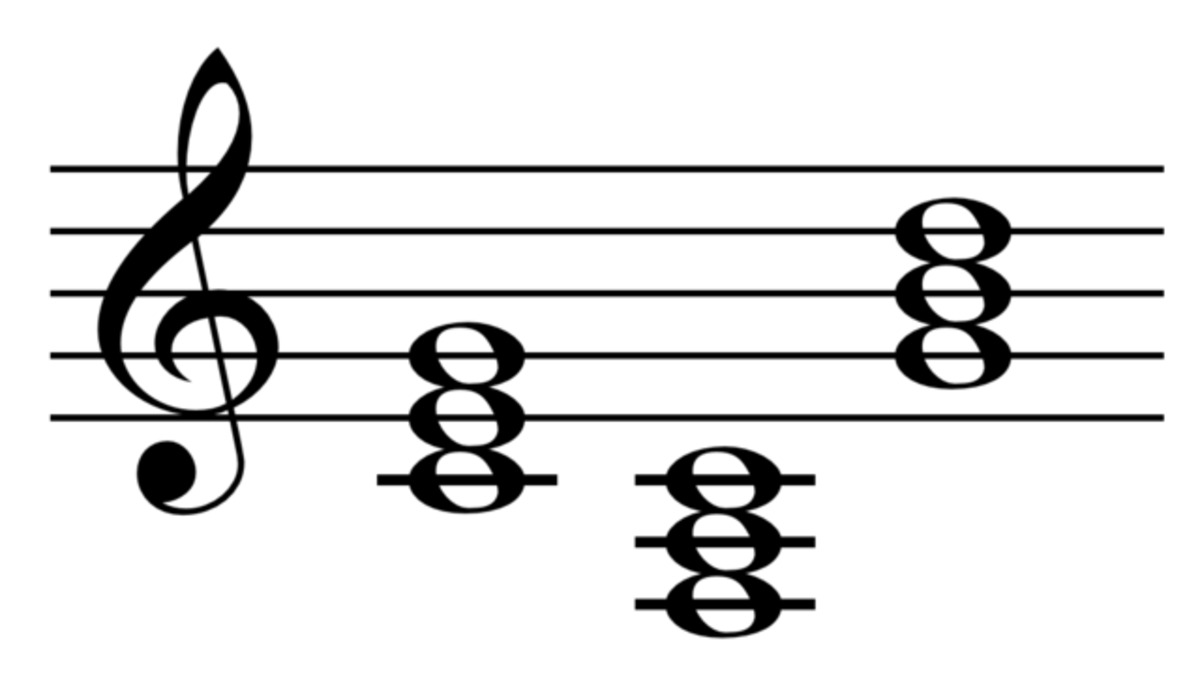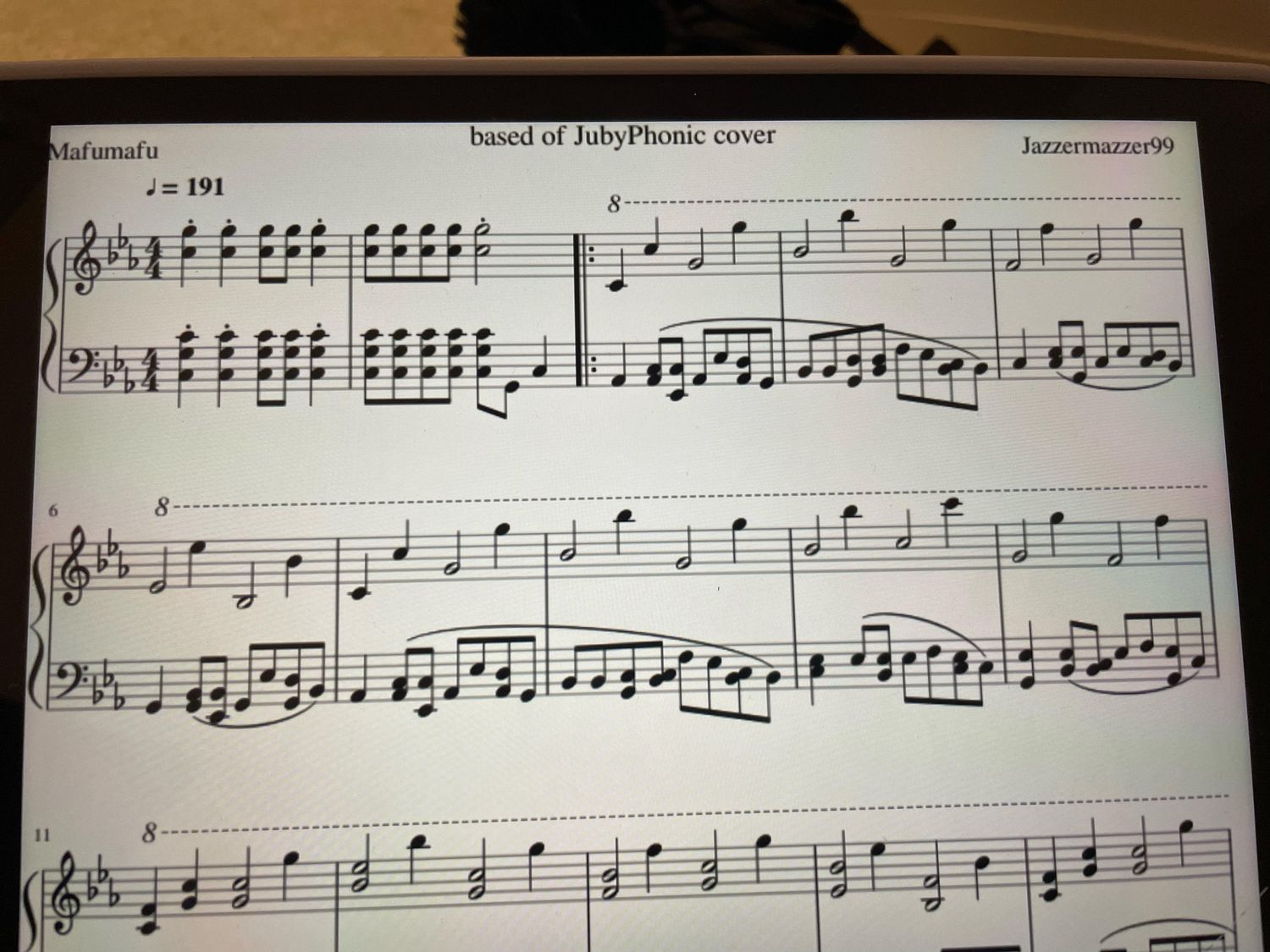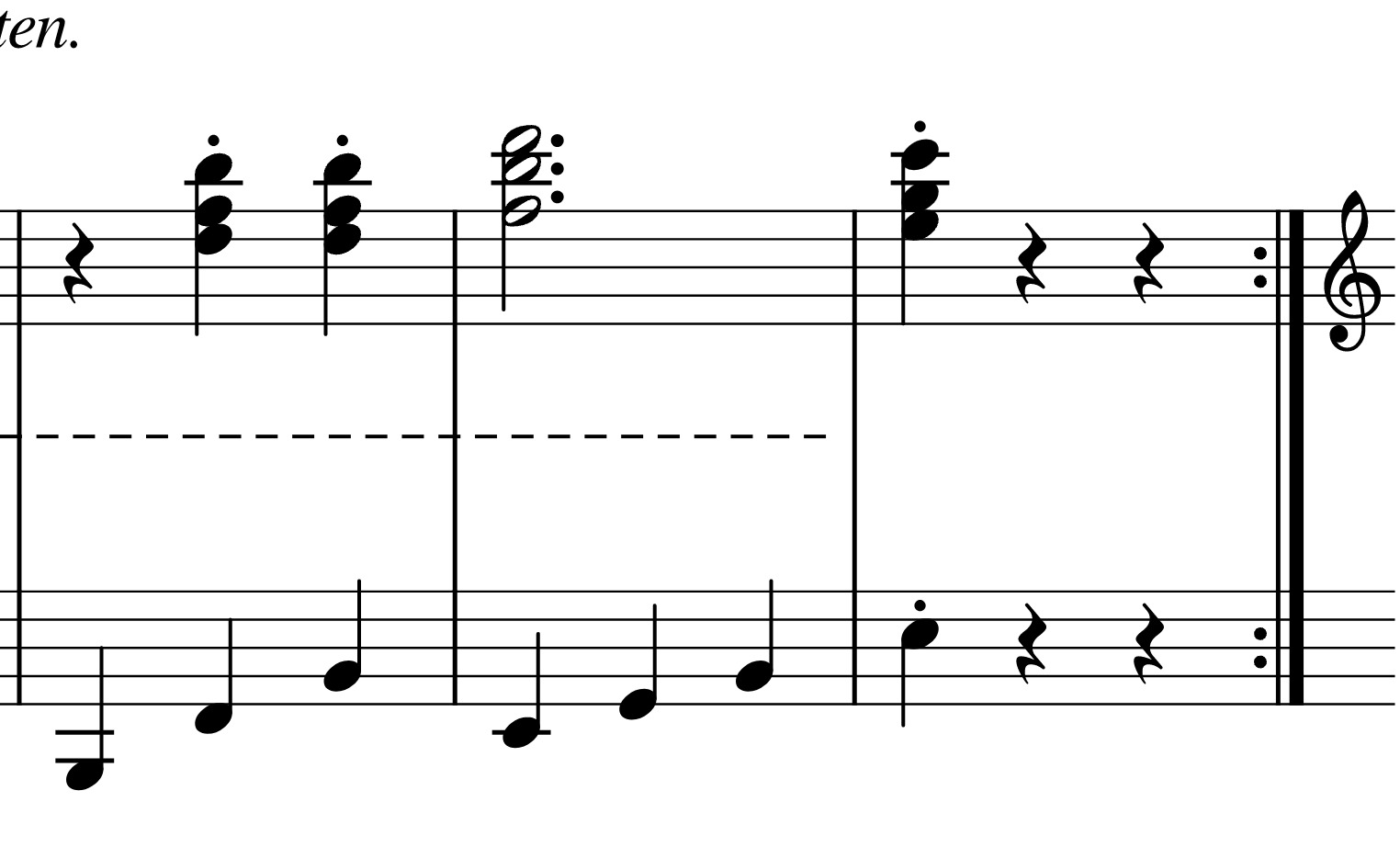Home>Production & Technology>Music Theory>What Are Inversions In Music Theory


Music Theory
What Are Inversions In Music Theory
Modified: January 31, 2024
Learn about inversions in music theory and how they can enhance your understanding of chord progressions and harmonies in compositions. Explore the different types and applications of inversions to add depth and complexity to your musical arrangements.
(Many of the links in this article redirect to a specific reviewed product. Your purchase of these products through affiliate links helps to generate commission for AudioLover.com, at no extra cost. Learn more)
Table of Contents
Introduction
Music theory is a fundamental aspect of understanding and appreciating the world of music. It provides us with the tools to analyze, create, and communicate musical ideas effectively. One of the key concepts in music theory is inversions.
In music, inversions refer to the rearrangement of the notes within a chord. Essentially, it is when the lowest note of a chord is not the root note. Inversions provide depth, variety, and character to musical compositions, enabling composers and musicians to create interesting and harmonically rich melodies and harmonies.
Understanding inversions is crucial for musicians and composers alike, as it allows them to explore different tonal possibilities and expand their creative palette. By knowing how to use inversions effectively, musicians can add complexity and texture to their compositions, creating a more engaging and dynamic listening experience for the audience.
In this article, we will explore the definition, concepts, types, benefits, and common examples of inversions in music theory. Whether you are a musician, composer, or simply a music enthusiast, this article will provide you with valuable insights into the world of inversions and how they can elevate your musical understanding and expression.
Definition of Inversions in Music Theory
In music theory, inversions refer to the rearrangement of the notes within a chord. Generally, a chord consists of three or more notes played simultaneously. The lowest note in a chord is called the “root” note, while the other notes are referred to as “upper voices” or “upper notes.”
When a chord is in its most basic form, with the root note at the bottom and the other notes stacked on top in ascending order, it is said to be in “root position.” However, when the root note is not at the bottom and one or more upper notes are moved to the bass, the chord is considered to be inverted.
Inversions provide a different musical perspective and tonal quality. They offer composers and musicians versatility in creating harmonic progressions and melodic lines. By rearranging the notes in a chord, inversions open up a wide range of possibilities for chord voicings and harmonic structure.
When a chord is inverted, the intervals between the notes change, resulting in unique and distinct timbres. The different inversions of a chord can evoke various emotions and moods, adding depth and complexity to musical compositions. This allows for more expressive and nuanced musical storytelling.
It’s important to note that inversions are not limited to triads (chords with three notes). They can also be applied to seventh chords, extended chords, and other complex chord structures. Inversions are a fundamental concept in harmony and are widely used in various musical genres, such as classical, jazz, pop, and rock.
Ultimately, inversions play a significant role in shaping the overall tonality and texture of a piece of music. Understanding and utilizing inversions effectively can greatly enhance the composition and performance of a musical work, leading to a more engaging and captivating musical experience.
Basic Concepts of Inversions
To grasp the concepts of inversions in music theory, it is important to understand a few fundamental principles. Here are some key concepts that will help you navigate the world of inversions:
- Root Note: The root note of a chord is the note that gives the chord its name. It is the foundation upon which the chord is built.
- Upper Notes or Upper Voices: The notes in a chord that are above the root note are known as the upper notes or upper voices. These notes add color and character to the chord.
- Bass Note: The lowest note of a chord, regardless of whether it is the root note or an upper note, is called the bass note. The bass note provides the foundation and establishes the harmonic structure of the chord.
- Chord Inversion: A chord inversion occurs when the bass note is different from the root note. In other words, it is when the order of the notes in a chord is rearranged to have an upper note as the bass note.
- Figured Bass: Figured bass notation is often used to indicate chord inversions. It is a system of symbols, numerals, or figures that represent the intervals above the bass note in a chord.
Understanding these basic concepts will allow you to identify and analyze inversions in music. By recognizing the relationship between the bass note and the upper notes, you can determine the specific inversion of a chord and understand its impact on the overall harmony and tonality of a composition.
It is worth noting that inversions can create different harmonic tensions and resolutions. They can affect the stability and directionality of musical progressions, adding variety and interest to a piece. The choice to use inversions is a creative decision made by composers and arrangers to achieve specific musical effects and evoke particular emotions.
Now that we have covered the basic concepts of inversions, let’s explore the different types of inversions and their characteristics in the next sections.
Types of Inversions
Inversions can be categorized into three main types: root position, first inversion, and second inversion. Each type has its distinct characteristics and provides a unique harmonic flavor. Let’s delve into each type:
- Root Position: Root position is the most basic form of a chord, where the root note is the lowest pitch. In other words, the chord is in its original order, with the other notes stacked above the root. In root position, the intervals between the notes follow the standard intervallic structure of the chord. For example, in a C major triad (C, E, G), the root position has C as the bass note.
- First Inversion: In first inversion, the note that is a third above the root becomes the bass note. This results in the other two notes being above the bass note. For instance, in a C major triad (C, E, G), the first inversion has E as the bass note, with G and C above it. First inversions are commonly indicated by a numeral “6” in figured bass notation to represent the interval of a sixth above the bass note.
- Second Inversion: In second inversion, the note that is a fifth above the root becomes the bass note. This means that there are two notes above the bass note. Using the same example of a C major triad (C, E, G), the second inversion has G as the bass note, with C and E above it. Second inversions are often indicated by a numeral “6/4” in figured bass notation, representing the intervals of a sixth and fourth above the bass note.
These three types of inversions provide different harmonic qualities and can be used to create specific musical effects. Root position chords tend to provide a stable and grounded foundation, while first and second inversions introduce tension and a sense of motion.
The ability to recognize and utilize these different types of inversions gives musicians and composers the freedom to explore various harmonic progressions, create smooth voice leading, and add complexity and interest to their compositions.
Now that we have explored the types of inversions, let’s dive deeper into how these inversions can be applied to different chord structures in the next sections.
Root Position
Root position is the most basic and common form of a chord. In this configuration, the root note is the lowest pitched note, forming the foundation of the chord. When a chord is in root position, the intervals between the notes follow the standard intervallic structure of the chord.
For example, in a C major triad (C, E, G), the root position has C as the bass note. The other two notes, E and G, are stacked above the root C. This arrangement creates a stable and grounded sound, providing a solid harmonic foundation.
Root position chords are typically represented without any figured bass notation since the lowest note already indicates the root. In sheet music or chord charts, a chord symbol followed by a letter “R” or a capital letter as a superscript (e.g., C or C^) may be used to denote root position.
Root position chords are frequently used in cadences, establishing harmonic stability and resolution. Their straightforward harmonic structure allows for easy recognition and understanding, making them essential building blocks in music theory and composition.
It’s important to note that while a chord is commonly played in root position, it can be inverted to create different harmonic possibilities and unique musical textures. The use of inversions provides variety and depth to musical compositions, allowing for more interesting and expressive musical storytelling.
Now that we have explored root position chords, let’s move on to learn about the first inversion, where the bass note is not the root but instead an upper note of the chord.
First Inversion
First inversion is a type of chord inversion where the note that is a third above the root becomes the bass note. This means that the root note is moved to an upper position, creating a different harmonic arrangement. In first inversion, the other two notes in the chord are stacked above the bass note.
Let’s take a C major triad (C, E, G) as an example. In first inversion, the E note becomes the bass note, while the other two notes, G and C, are placed above it. This results in the chord being voiced as E, G, C.
First inversions are commonly indicated using figured bass notation, with a 6 representing the interval of a sixth above the bass note. So, in figured bass, the first inversion of a C major triad would be labeled as “C6.”
First inversions introduce a sense of tension and movement to the harmony. They have a lighter and more open sound compared to root position chords. The shifting of the bass note creates a different tonal center, adding complexity and interest to the chord progression.
First inversions are often used to enhance voice leading, allowing for smooth and melodic transitions between chords. They can also help create strong harmonic resolutions when resolving to a root position chord, providing a satisfying sense of closure.
In music composition, first inversions are frequently used in chord progressions, arpeggios, and melodic lines to add variety and color to the overall musical texture. By understanding and utilizing first inversions, musicians and composers can create more dynamic and expressive compositions.
Now that we have explored first inversions, let’s move on to the next type of inversion called the second inversion.
Second Inversion
Second inversion is another type of chord inversion where the note that is a fifth above the root becomes the bass note. This means that both the root note and the third of the chord are stacked above the bass note. In second inversion, the chord voicing is created with the bass note and the two upper notes.
Using a C major triad (C, E, G) as an example, in second inversion, the G note becomes the bass note, while the C and E notes are placed above it. The chord is voiced as G, C, E.
In figured bass notation, a second inversion is commonly represented as “6/4” to indicate the intervals of a sixth and a fourth above the bass note. So, the second inversion of a C major triad would be labeled C6/4.
Second inversions create a sense of tension and restlessness. They have a less stable and more suspended sound compared to root position and first inversion chords. The bass note being a fifth above the root introduces a strong feeling of motion and a desire for resolution.
Second inversions are often used to create suspense and to intensify the harmonic progression. They can be utilized to prolong the resolution, creating a sense of anticipation and building musical tension. This makes them valuable for creating climactic moments or for setting up a strong resolution to a root position or first inversion chord.
Like first inversions, second inversions are commonly found in various musical genres and are used to add variety and depth to chord progressions, arpeggios, and melodic lines. Understanding and incorporating second inversions into compositions allows for a more nuanced and intricate musical expression.
Now that we have explored the different types of inversions, let’s move on to discuss the concept of inverted chords and their significance in music theory.
Inverted Chords
Inverted chords are chords that are rearranged in a non-root position, whether it be in first or second inversion. When a chord is inverted, the root note is no longer in the bass position, and one or more upper notes take its place.
With inversions, chords take on a different harmonic quality and character. The rearrangement of the notes creates unique voicings and alters the intervals within the chord, resulting in different tonal colors and expressive possibilities.
Inverted chords are essential in creating harmonic interest and movement in music. They allow for smooth voice leading and create a sense of tension and release. Inverted chords can also enhance the melodic flow and shape of a composition, providing a variety of tonal possibilities.
When working with inverted chords, it’s important to consider the voice leading and the overall harmonic progression. Smooth voice leading ensures that the melodic lines transition smoothly between the chords, creating a seamless musical flow.
Composers and musicians often use inverted chords to create harmonic tension and resolution. They can be employed to create a sense of suspension or anticipation, leading to a satisfying resolution when the chord returns to its root position. Inverted chords are also influential in creating dynamic and colorful chord progressions.
Additionally, when arranging chords for different instruments or voices, inversions can help with achieving a balanced and cohesive sound. Inverted chords distribute the notes across different registers, preventing overcrowding or clashing of voices.
Understanding and utilizing inverted chords expands the harmonic vocabulary of musicians and composers. By experimenting with different inversions, they can enrich their compositions, allowing for more expressive and captivating musical experiences.
Now that we have explored inverted chords, let’s delve into the benefits and uses of inversions in music theory.
Benefits and Uses of Inversions
Inversions play a crucial role in music theory and composition, offering several benefits and serving various uses. Understanding and utilizing inversions can greatly enhance musical compositions and performances. Here are some of the key benefits and uses of inversions:
1. Harmonic Variety: Inversions allow for diverse and interesting chord voicings, offering a wide range of tonal colors and textures. By rearranging the notes within a chord, musicians can create unique harmonic progressions and add depth and complexity to their compositions.
2. Smooth Voice Leading: Inversions facilitate smooth voice leading, where the individual melodic lines transition effortlessly between chords. They provide a more coherent and seamless flow, enhancing the overall musicality and expressiveness of a piece.
3. Tonal Shaping: Inversions can shape the tonality of a composition, adding tension or relaxation to different sections. They create a sense of movement and directionality, allowing for dynamic shifts and emotional impact within the music.
4. Creating Tension and Resolution: Inversions are powerful tools for creating tension and resolution in music. They can be used to extend harmonic progressions, prolonging moments of suspense before resolving to more stable chord positions.
5. Enhancing Melodic Lines: Inversions can enhance melodic lines by introducing new melodic shapes or highlighting specific notes. This can add melodic interest and emphasize particular musical ideas within a composition.
6. Balancing Chord Voicings: Inverted chords distribute the notes across different registers, creating a balanced and cohesive sound. This is especially important when arranging chords for different instruments or voices, ensuring each part has its distinctive role.
7. Expressive Compositional Tool: By utilizing various inversions, composers can convey specific emotions, moods, or atmospheres in their music. Inversions add depth, complexity, and expressive possibilities, enabling composers to tell nuanced and captivating musical stories.
Overall, the benefits and uses of inversions in music theory are vast. They provide harmonically rich voicings, improve voice leading, shape tonality, create tension and resolution, enhance melodies, balance chord voicings, and offer a wide range of expressive possibilities for composers and performers.
Now, let’s explore some common examples of inversions in music to witness these concepts in practice.
Common Examples of Inversions in Music
Inversions are widely used in various musical genres and can be found in countless compositions. They add depth, texture, and harmonic interest to the music, creating memorable and expressive moments. Here are some common examples of inversions in music:
1. Classical Music: Classical compositions frequently employ inversions to enhance the harmonic progression and create intricate melodic lines. Pieces by renowned composers such as Johann Sebastian Bach and Ludwig van Beethoven showcase the use of inversions to create tension, resolution, and artful voice leading.
2. Jazz Music: In jazz, inversions are a staple for creating rich, chromatic harmonies. Musicians use inversions to add color and complexity to their chord voicings, enabling intricate improvisation and fluid chord progressions. Jazz standards and improvisational pieces abound with examples of inversions used creatively.
3. Pop and Rock Music: Inversions find their place in pop and rock music as well. These genres often employ inversions to create unique chord progressions, add interest to melodic lines, and enhance the overall energy and texture of the music. Artists like The Beatles, Queen, and Radiohead are known for incorporating inversions in their compositions.
4. Film and Game Scores: Inversions are also prevalent in the realm of film and game scores. Composers use inversions to evoke specific emotions, underscore dramatic moments, and create memorable themes. The use of inversions can be heard in the works of film composers like John Williams and Hans Zimmer, as well as in video game soundtracks by composers such as Nobuo Uematsu and Jeremy Soule.
5. Contemporary and Experimental Music: Inversions play a significant role in contemporary and experimental music. Composers in these genres often explore unconventional harmonic structures, making extensive use of inversions to challenge traditional tonal boundaries and create unique sonic experiences.
These are just a few examples of how inversions are used across different musical genres. Inversions can be found in various musical contexts, from simple triads to more complex chords and extended harmonies.
By studying and analyzing musical compositions, and experimenting with inversions in our own musical creations, we can further understand and appreciate the versatility and expressive power that inversions bring to the world of music.
Now, let’s conclude our exploration of inversions in music theory.
Conclusion
Inversions are a vital concept in music theory, offering a wide range of creative possibilities for composers, musicians, and music enthusiasts. By rearranging the notes within a chord, inversions provide harmonic variety, smooth voice leading, and a sense of tension and resolution in music.
We have explored the definition of inversions and the basic concepts associated with them. We have also delved into the three main types of inversions: root position, first inversion, and second inversion. Each type offers a distinct harmonic quality and serves different musical purposes.
From providing tonal variety and enhancing melodic lines to balancing chord voicings and creating harmonic tension, inversions play a crucial role in shaping the overall musical texture and expression. They are utilized in various genres, including classical, jazz, pop, and film and game scoring.
Understanding inversions and incorporating them into musical compositions allows for greater depth and complexity. By utilizing inversions, composers can evoke specific emotions, create dynamic progressions, and captivate listeners with their musical storytelling.
Whether you are a musician, composer, or simply a music enthusiast, exploring the world of inversions in music theory can enhance your appreciation and understanding of the intricacies within musical compositions.
So, embrace inversions as a tool to unlock new musical possibilities and venture into uncharted harmonic territories. Let the rearrangement of notes immerse you in the rich tapestry of sounds and enable you to create captivating musical journeys.
Remember, inversions are not just theoretical concepts, but living elements that can breathe life into your music. Embrace their power, experiment with their application, and let your creative instincts guide you to new melodic horizons.
Begin incorporating inversions into your compositions and performances, and may your musical creations resonate with depth, emotion, and expressive beauty.











